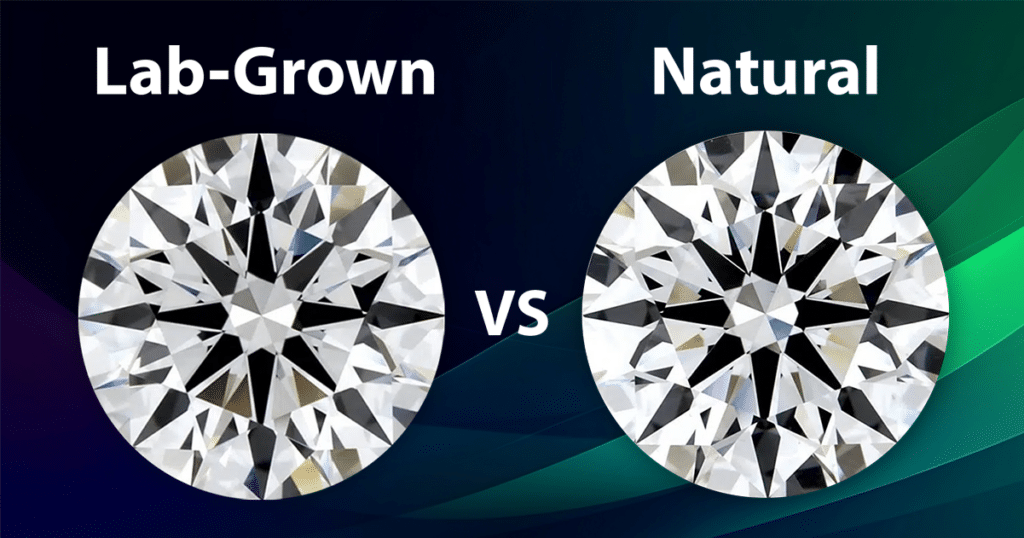Prologue to IGI and GIA Jewel Reviewing
While assessing lab grown jewels, understanding the reviewing frameworks of various gemological laboratories is fundamental. The Global Gemological Foundation (IGI) and the Gemological Establishment of America (GIA) are two of the most famous associations that evaluate and guarantee lab grown jewels. Each has its own evaluating models and principles, which can impact the quality and worth of the precious stones they confirm. This guide looks at IGI vs GIA lab grown precious stones to assist you with settling on an educated choice while picking your jewel.
The GIA Evaluating Framework for Lab Grown Jewels
The Gemological Establishment of America (GIA) is a main expert in jewel reviewing, eminent for its thorough and itemized assessment process. GIA lab grown precious stones are reviewed in view of the 4Cs: Cut, Variety, Clearness, and Carat Weight. GIA’s reviewing reports are profoundly regarded for their consistency and exactness. The GIA utilizes a severe arrangement of norms to evaluate every precious stone, it is solid and dependable to guarantee that the reviewing. The foundation’s extensive evaluating framework gives itemized data about the precious stone’s attributes, assisting shoppers with grasping its quality and worth.
The IGI Reviewing Framework for Lab Grown Precious stones
The Global Gemological Foundation (IGI) is another unmistakable association that grades lab grown jewels. Like the GIA, IGI assesses jewels in view of the 4Cs: Cut, Variety, Lucidity, and Carat Weight. IGI is known for its worldwide reach and spotlight on giving open and nitty gritty evaluating reports. While IGI’s evaluating principles are thorough, there are a few distinctions in their methodology contrasted with the GIA. IGI’s reports frequently incorporate extra data like fluorescence and evenness, offering a more complete perspective on the precious stone’s credits.
Key Contrasts Among IGI and GIA Evaluating
While contrasting IGI vs GIA lab grown jewels, a few key contrasts arise. One eminent distinction is the evaluating scale and wording utilized by every association. While both IGI and GIA utilize similar 4Cs, the manner in which they survey and report these attributes can differ. For instance, GIA is known for its more safe reviewing, frequently bringing about higher accuracy and less change in grades. IGI, then again, gives a more extensive scope of data, which can be gainful for purchasers looking for a more itemized investigation.
Precision and Consistency in Reviewing
Precision and consistency are basic variables in jewel reviewing, and both IGI and GIA are known for their exclusive requirements. GIA’s reviewing interaction is famous for its careful meticulousness and consistency, which has gained notoriety for unwavering quality. IGI likewise keeps an elevated degree of precision, yet some industry experts accept that GIA’s reviewing is somewhat more rigid. This distinction can influence the apparent nature of lab grown jewels evaluated by every association, making it significant for buyers to comprehend the reviewing guidelines while making a buy.
Buyer Certainty and Acknowledgment
Buyer trust in precious stone evaluating reports is affected by the standing and acknowledgment of the reviewing association. GIA is generally viewed as the best quality level in jewel evaluating, with a well established history of greatness and believability. Numerous shoppers and gem dealers consider GIA reports to be the most legitimate and dependable. IGI likewise holds serious areas of strength for an in the business, however it might not have a similar degree of acknowledgment as GIA. Understanding the effect of these notorieties can assist customers with feeling more positive about their precious stone buys.
Step by step instructions to Decipher Evaluating Reports
Both IGI and GIA give definite reviewing reports to lab grown precious stones, yet deciphering these reports requires understanding the data introduced. GIA reports normally center around the 4Cs and give a reasonable, direct evaluation of the jewel’s quality. IGI reports, while likewise covering the 4Cs, may incorporate extra subtleties like fluorescence and balance, offering a more complete view. While contrasting IGI vs GIA lab grown jewels, cautiously audit the reviewing reports to guarantee that you comprehend the precious stone’s qualities and the way in which they line up with your inclinations.
Picking either IGI and GIA Lab Grown Jewels
Choosing IGI vs GIA lab grown diamonds stones at last relies upon your inclinations and needs. In the event that you esteem a more moderate and profoundly respected reviewing framework, GIA might be the favored decision. GIA’s reports are known for their accuracy and consistency, making them a confided in choice for some customers. Nonetheless, in the event that you look for a more itemized evaluating report that incorporates extra credits, IGI may be the ideal decision. The two associations offer important bits of knowledge into the nature of lab grown jewels, so consider your particular requirements and inclinations while pursuing a choice.
The Eventual fate of Lab Grown Jewel Evaluating
As the market for lab grown precious stones keeps on developing, the reviewing norms of associations like IGI and GIA are probably going to advance. The two establishments are focused on keeping up with exclusive requirements of precision and straightforwardness, guaranteeing that purchasers approach solid data. Future headways in evaluating innovation and strategies might additionally improve the accuracy and detail of lab grown precious stone appraisals. Remaining informed about these improvements can assist you with settling on the best decision while choosing lab grown precious stones.
End: IGI vs GIA Lab Grown Jewels
All in all, understanding the distinctions between IGI vs GIA lab grown jewels is fundamental for making an educated buy. The two associations give important reviewing administrations, yet their methodologies and norms can change. GIA is eminent for its exact and moderate evaluating, while IGI offers a more extensive scope of data in its reports. By taking into account the key distinctions, precision, purchaser certainty, and your own inclinations, you can unhesitatingly pick a lab grown precious stone that lives up to your assumptions and lines up with your qualities.

